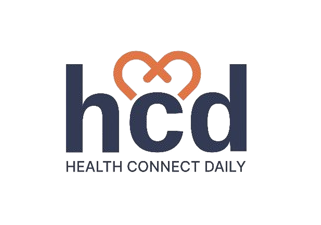
Inflammatory bowel disease (IBD) is a term that encompasses chronic digestive disorders marked by gut inflammation. Among the most common IBD types are Crohn’s disease and ulcerative colitis two conditions that share similarities but have important differences.
Understanding these distinctions is crucial for patients, caregivers, and healthcare providers.
At Health Connect Daily, we aim to provide clear, research-backed information to help you navigate these complex diseases and empower your health journey.
What is Inflammatory Bowel Disease (IBD)?
Inflammatory bowel disease refers to chronic conditions that cause inflammation in the gastrointestinal (GI) tract. The two main IBD types Crohn’s disease and ulcerative colitis result in persistent gut inflammation leading to digestive discomfort, nutrient malabsorption, and other systemic effects.
Prevalence: According to the CDC, around 3 million adults in the U.S. are diagnosed with IBD.
Symptoms: Include diarrhea, abdominal pain, fatigue, and weight loss.
Causes: Thought to involve a combination of genetic, environmental, and immune system factors.
Overview of Crohn’s Disease
Crohn’s disease is a chronic inflammatory disorder that can affect any part of the GI tract, from mouth to anus. The inflammation typically penetrates the entire thickness of the bowel wall.
Commonly affected areas: Terminal ileum, colon.
Inflammation type: Patchy, segmental (“skip lesions”).
Symptoms: Abdominal cramps, diarrhea (often bloody), weight loss, fever.
Overview of Ulcerative Colitis
Ulcerative colitis is limited to the colon and rectum. It involves continuous inflammation of the innermost lining of the large intestine.
Affected area: Colon (large intestine) and rectum only.
Inflammation type: Continuous, starting at the rectum.
Symptoms: Bloody diarrhea, urgency, abdominal pain, rectal bleeding.
Causes and Risk Factors of IBD
The exact cause of both Crohn’s disease and ulcerative colitis remains unknown, but research suggests an interplay of several factors:
| Risk Factor | Description |
| Genetics | Family history increases risk |
| Immune System | Abnormal immune response triggers inflammation |
| Environmental | Smoking increases Crohn’s risk; diet, pollution may play roles |
| Age | Commonly diagnosed between ages 15-35 |
Symptoms of Crohn’s Disease vs. Ulcerative Colitis
| Symptom | Crohn’s Disease | Ulcerative Colitis |
| Diarrhea | Common, may be bloody | Common, often bloody |
| Abdominal Pain | Cramping, severe | Cramping, mild to moderate |
| Weight Loss | Frequent due to malabsorption | Less common |
| Rectal Bleeding | Less common | Very common |
| Fever | Sometimes | Rare |
| Fatigue | Common | Common |
Affected Areas of the Digestive Tract in Crohn’s Disease vs. Ulcerative Colitis
Understanding which parts of the gastrointestinal (GI) tract are affected is critical in distinguishing between the two main types of inflammatory bowel disease (IBD)—Crohn’s disease and ulcerative colitis. Each condition impacts the digestive system differently, leading to varying symptoms, complications, and treatment approaches.
Crohn’s Disease: Inflammation Anywhere Along the GI Tract
One of the hallmark characteristics of Crohn’s disease is its ability to affect any part of the digestive tract, from the mouth to the anus. This can result in patchy inflammation and deeper tissue involvement, making Crohn’s a complex and often more variable condition.
Commonly Affected Areas in Crohn’s Disease:
- Mouth: Can lead to mouth ulcers and oral discomfort.
- Esophagus: May cause swallowing difficulties or acid reflux.
- Stomach: Nausea, indigestion, and upper abdominal pain may occur.
- Small Intestine (especially the ileum): Most frequently affected; symptoms include malabsorption, cramping, and diarrhea.
- Colon: May mimic ulcerative colitis with bloody stools and urgency.
- Anus: Can result in perianal disease, such as abscesses, fissures, or fistulas.
Key Insight: In Crohn’s, inflammation is often discontinuous, meaning it appears in “skip lesions” with healthy sections in between diseased segments.
Ulcerative Colitis: Inflammation Confined to the Colon and Rectum
Unlike Crohn’s disease, ulcerative colitis (UC) only affects the large intestine (colon) and rectum. The inflammation is continuous and limited to the mucosal layer of the bowel wall.
Affected Areas in Ulcerative Colitis:
- Rectum (proctitis): Inflammation starts here and can cause bleeding, urgency, and rectal discomfort.
- Colon (entire large intestine): The inflammation spreads in a continuous manner from the rectum upward, potentially involving the sigmoid colon, descending colon, and beyond.
Key Insight: The extent of involvement in UC determines its classification:
- Ulcerative proctitis – rectum only
- Left-sided colitis – rectum to splenic flexure
- Pancolitis – entire colon
Comparison Table: Affected Digestive Tract Areas
| Digestive Tract Section | Crohn’s Disease | Ulcerative Colitis |
| Mouth | Can be affected | Not affected |
| Esophagus | Occasionally | Not affected |
| Stomach | Occasionally | Not affected |
| Small Intestine | Common (especially ileum) | Not affected |
| Colon (Large Intestine) | Often involved | Always involved |
| Rectum | Sometimes | Always involved |
| Anus | Common (perianal disease) | Not affected |
Why This Matters for Diagnosis and Treatment
Knowing where inflammation occurs helps guide the diagnostic process, such as choosing the right imaging (e.g., colonoscopy, capsule endoscopy) and selecting appropriate treatments. For instance:
- Crohn’s disease patients may require imaging of the small intestine and targeted therapies for deep tissue inflammation.
- Ulcerative colitis patients benefit from colon-specific anti-inflammatory medications and may consider colectomy if symptoms are unmanageable.
Inflammation Patterns in IBD Types
Crohn’s disease causes transmural inflammation, affecting all layers of the intestinal wall, which can lead to complications like fistulas or strictures.
Ulcerative colitis causes inflammation limited to the mucosal layer (innermost lining) of the colon.
Diagnosis Methods for Crohn’s and Ulcerative Colitis
Accurate diagnosis involves a combination of:
- Blood tests: Check for anemia, inflammation markers (CRP, ESR).
- Stool tests: Rule out infections.
- Colonoscopy: Visualize inflammation, take biopsies.
- Imaging: MRI or CT enterography to assess bowel wall and complications.
Complications Associated with Each Condition
| Complication | Crohn’s Disease | Ulcerative Colitis |
| Strictures | Common (due to transmural inflammation) | Rare |
| Fistulas | Common | Rare |
| Colon Cancer Risk | Increased, especially with long disease duration | Increased, especially with extensive colitis |
| Nutrient Deficiencies | Common (B12, iron, vitamin D) | Less common |
Treatment Approaches: Similarities and Differences
Both diseases often require:
- Anti-inflammatory medications: Corticosteroids, aminosalicylates.
- Immunosuppressants: Azathioprine, methotrexate.
- Biologics: TNF inhibitors (e.g., infliximab), integrin receptor antagonists.
Differences:
- Surgery in Crohn’s disease is often to remove affected segments or treat fistulas.
- Surgery in ulcerative colitis can be curative by removing the colon (colectomy).
Diet and Lifestyle Modifications
Though no specific diet cures IBD, patients often benefit from:
- Low-residue diets during flares.
- Avoiding trigger foods (spicy, high-fat, dairy for some).
- Smoking cessation (especially important in Crohn’s disease).
- Stress management techniques.
Impact on Quality of Life with Inflammatory Bowel Disease (IBD)
Living with chronic digestive disorders such as Crohn’s disease and ulcerative colitis can significantly disrupt everyday life. The unpredictable nature of these IBD types often causes emotional, physical, and social challenges.
How IBD Affects Daily Life:
- Fatigue: Chronic inflammation and nutrient malabsorption can lead to extreme tiredness.
- Chronic Pain: Abdominal cramping and joint pain are common in both IBD types.
- Mental Health: Anxiety and depression are frequent due to disease unpredictability and social embarrassment.
- Work & School: Frequent bathroom visits and flare-ups interfere with attendance and productivity.
- Social Isolation: Many patients avoid outings due to fear of urgent bowel movements or dietary limitations.
Tip: Access to a multidisciplinary team including gastroenterologists, dietitians, and mental health professionals can greatly improve quality of life for people managing gut inflammation.
Recent Advances in IBD Research
Significant strides have been made in IBD research, offering hope for more effective and personalized treatments for Crohn’s disease and ulcerative colitis.
Key Developments Transforming IBD Care:
- Targeted Biologic Therapies: Medications like adalimumab and ustekinumab target specific immune pathways to reduce inflammation and increase remission rates.
- Microbiome Research: New studies are uncovering how gut bacteria contribute to digestive disorders and how modifying the microbiome may help reduce flare-ups.
- Personalized Medicine: Genetic and biomarker testing is being used to tailor treatment plans based on an individual’s specific disease profile.
- Non-Invasive Monitoring: Tools like fecal calprotectin tests and capsule endoscopy are reducing the need for repeated colonoscopies.
Biologic treatments have improved remission rates in moderate-to-severe Crohn’s disease to nearly 40–60% within the first year, depending on the therapy used.
When to See a Doctor: Warning Signs of Serious IBD Flare-Ups
Recognizing symptoms that indicate complications or disease progression is crucial in managing inflammatory bowel disease effectively. If left untreated, both Crohn’s disease and ulcerative colitis can lead to serious health problems.
Critical Warning Signs Include:
- Persistent Diarrhea: Lasting more than 2 weeks, especially if accompanied by urgency or nocturnal symptoms.
- Severe Abdominal Pain: Pain that is localized, worsening, or associated with bloating or vomiting.
- Unexplained Weight Loss: Could indicate malabsorption, chronic inflammation, or nutritional deficiency.
- Blood in Stool: A possible sign of mucosal ulceration or complications like fissures or strictures.
- Fever with GI Symptoms: May signal infection, abscess, or other serious complications requiring urgent care.
If you experience any of these symptoms, consult a gastroenterologist or visit your healthcare provider immediately. Early diagnosis and intervention can help manage flare-ups and prevent complications.
Summary Table: Key Differences Between Crohn’s Disease and Ulcerative Colitis
| Feature | Crohn’s Disease | Ulcerative Colitis |
| Affected Areas | Any part of GI tract | Colon and rectum only |
| Inflammation Pattern | Patchy, transmural | Continuous, mucosal layer |
| Common Symptoms | Abdominal pain, diarrhea, weight loss | Bloody diarrhea, rectal bleeding |
| Complications | Strictures, fistulas | Toxic megacolon, colon cancer risk |
| Surgical Treatment | Segmental bowel resection | Colectomy (curative) |
At Health Connect Daily, we strive to keep you informed on important health topics like IBD, helping you recognize symptoms early and seek appropriate care. If you or a loved one is experiencing digestive issues, consult a healthcare professional for diagnosis and tailored treatment.
FAQ
How can I tell if my symptoms are from Crohn’s disease or ulcerative colitis?
A: While both cause abdominal pain and diarrhea, Crohn’s often affects the entire GI tract and can lead to weight loss, while ulcerative colitis is limited to the colon and rectum with more frequent rectal bleeding. A colonoscopy and imaging are essential for accurate diagnosis.
What should I eat during a flare-up of IBD?
A: Opt for low-fiber, easy-to-digest foods like white rice, bananas, and boiled chicken. Avoid raw vegetables, nuts, and dairy unless tolerated. Always consult your doctor or dietitian for a personalized IBD diet plan.
Can stress really trigger Crohn’s or UC flare-ups?
A: Yes, while stress doesn’t cause IBD, it can aggravate inflammation and symptoms. Managing stress through meditation, therapy, or light exercise can help reduce flare frequency and severity.
Are there any non-medication options for managing IBD symptoms?
A: Besides medication, lifestyle strategies like anti-inflammatory diets, probiotics, yoga, and acupuncture have shown benefits in managing gut inflammation. However, always pair them with doctor-approved treatments.
When should I consider surgery for IBD?
A: Surgery is usually considered when medications fail, complications arise (like strictures or abscesses), or there’s precancerous tissue. It’s more common in Crohn’s than UC, but for ulcerative colitis, removing the colon can be curative.
